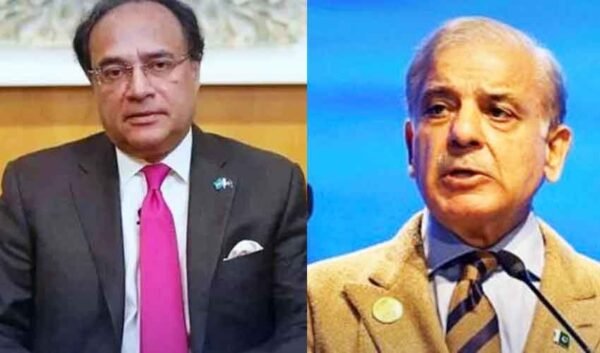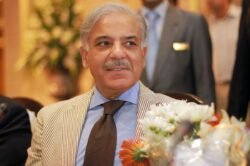SHAHBAZ – AURAGZEB DUO CAN TURN AROUND THE ECONOMY OF PAKISTAN

Amid economic challenges, Pakistan is poised for a transformative journey under the leadership of the Shahbaz-Aurangzeb duo. With strategic reforms and bold initiatives, Pakistan is on the path to realizing its vast economic potential. From macroeconomic stability to sectoral revitalization, the duo’s vision is driving Pakistan towards a brighter future.
- Pakistan’s Path to Trillion-Dollar Economy
The World Bank released a report in 2019 titled “Pakistan at 100: Shaping the Future 2047,” which outlines the potential for Pakistan’s economy to grow from 300 billion dollars to a 3 trillion-dollar economy by the year 2047. According to WB to achieve macroeconomic stability, it is imperative to engage in thorough economic management practices, such as exercising exchange rate flexibility, exercising fiscal restraint, and upholding the implementation of the FY24 budget and the IMF-SBA. In a noteworthy development on 28 March 2024, the Pakistan stock market surpassed the 67,000 level, marking a historic milestone. This benchmark signals a promising trajectory toward this ambitious economic target under the duo of PM Shahbaz Sharif and Finance Minister M. Aurangzaib.
Pakistan has concluded the second and final review under a $1.1 billion short-term IMF agreement. This agreement acknowledges the effective execution of the program by the State Bank of Pakistan and the commitment of PM Shehbaz Sharif’s administration to continuous policy and reform initiatives aimed at transitioning Pakistan from a state of stability to a robust and enduring economic revival. Now Pakistan intends to discuss the details of a new Extended Fund Facility (EFF) in 2024.
- Pakistan’s Dual Approach to Structural Reforms and Taxation
For economic stability, Pakistan must undertake the necessary measures to remain on a trajectory toward recovery. The government is currently devising a dual approach to pursue structural reforms aimed at improving the Tax to GDP ratio. For this objective, the finance ministry is collaborating with the law ministry and FBR to address the issue of tax revenue leakage, implement a track and trace system, and digitize its operations. These measures aim to promote transparency and operational efficiency, ultimately leading to improved tax collections. To promote strong and mutually beneficial cooperation, the government is also ready to engage in partnership with China in the field of Taxation. With such concerted efforts underway, it is that the present government possesses the capability to significantly turn around Pakistan’s economic development.
Regarding privatization, the implementation of PIA and the outsourcing of airports are making significant advancements. The economic recovery in the country is primarily driven by the private sector, with the government assuming responsibility for establishing and maintaining a policy framework and policy continuity. The government is enhancing collaboration between the PSE and CSE to emphasize the importance of Chinese investment in Pakistan and its participation with local enterprises. This initiative aims to not only facilitate the expansion of capital markets in Pakistan but also support the implementation of CPEC phase 2.
- Agricultural Resurgence and SIFC
Under the SIFC broader initiative, GDP demonstrates a recovery primarily attributed to a 5% gain in the agriculture sector. It is anticipated that the agriculture and livestock industries will sustain their growing momentum since projections indicate a substantial increase in wheat, rice, and maize yields for the current season. Significantly, the Kachhi Canal in Pakistan has remarkably transformed from a barren desert to a moving river. This engineering marvel has breathed life into the barren regions, giving water for agriculture and sustaining populations. This ambitious government-led initiative signifies a rigorous economic measure to transform the deserts into fertile lands, promising agricultural prosperity and sustainable development.
- Combatting Illicit Trade-Key Strategy for Economic Rejuvenation
In addition to its economic initiative, the government is prioritizing the implementation of a rigorous enforcement strategy against illicit activities and criminal groups, targeting smuggling, money laundering, and hoarding, to rejuvenate the national economy. According to the Pakistan Institute of Development Economics, the illegal economy in Pakistan currently holds a minimum value of $150 billion, which accounts for almost 40 percent of the country’s projected GDP of $375 billion in 2022. This rigorous effort underscores the present government’s commitment to fostering transparency, integrity, and sustainable economic growth.
- Reko-Diq: A Treasure Trove of Black Gold in Pakistan
Reko Diq mine in Balochistan comprises a substantial unexplored copper-gold deposit comprising 5.9 billion tonnes of ore, which yields copper worth $3 billion annually and gold worth $600 million. A substantial investment of $10 billion is anticipated for this undertaking, with production commencing in 2028. Copper is the oil of the future due to its pervasive utilization in contemporary and cutting-edge technologies. By nurturing partnerships and joint ventures and actively engaging with international mining companies, Pakistan is capitalizing on this opportunity. It is a treasure trove of black gold that Pakistan is resting on.
- Surge in Pakistan Dollar Bonds- Investors’ Confidence
Pakistan’s dollar bonds have experienced a notable increase in prices over the past few weeks. There is an increasing number of investors who are interested in purchasing them. To create a brighter future, the government should prioritize focused leadership and strategic planning, Undoubtedly, the current government led by Prime Minister Shahbaz is placing a high priority on strategic planning. The recent surge in prices of Pakistan’s bonds and Sukuk, along with positive assessments from global financial institutions such as Bank of America, Moody’s Investors Service, and Goldman Sachs, indicates a promising outlook for the country’s economic prospects.
- A Holistic Approach to Pakistan’s Economic Prosperity
To fully actualize its capabilities, Pakistan ought to adopt a holistic approach to economic expansion that centers on privatization, foreign investment attraction, subsidy phase-out, cartel dismantlement, and the adoption of free trade. The duo of finance minister and Shehbaz Sharif can rewrite the economic story of Pakistan. From implementing structural reforms to enhance the tax-to-GDP ratio, revitalizing agriculture and livestock sectors, cracking down on illegal activities, and advancing privatization initiatives, to capitalizing on strategic investments like Reko Diq and fostering international partnerships, Pakistan is taking bold steps towards economic prosperity.
As Pakistan stands at the crossroads of opportunity, there’s a profound sense of hope and optimism for the future. The concerted efforts led by the Shahbaz-Aurangzeb duo signify a turning point in Pakistan’s economic narrative. With determination and strategic planning, Pakistan is primed to overcome hurdles and emerge as a beacon of prosperity and growth on the global stage. Together, we believe in the potential of Pakistan to rewrite its economic story and pave the way for a prosperous tomorrow.






